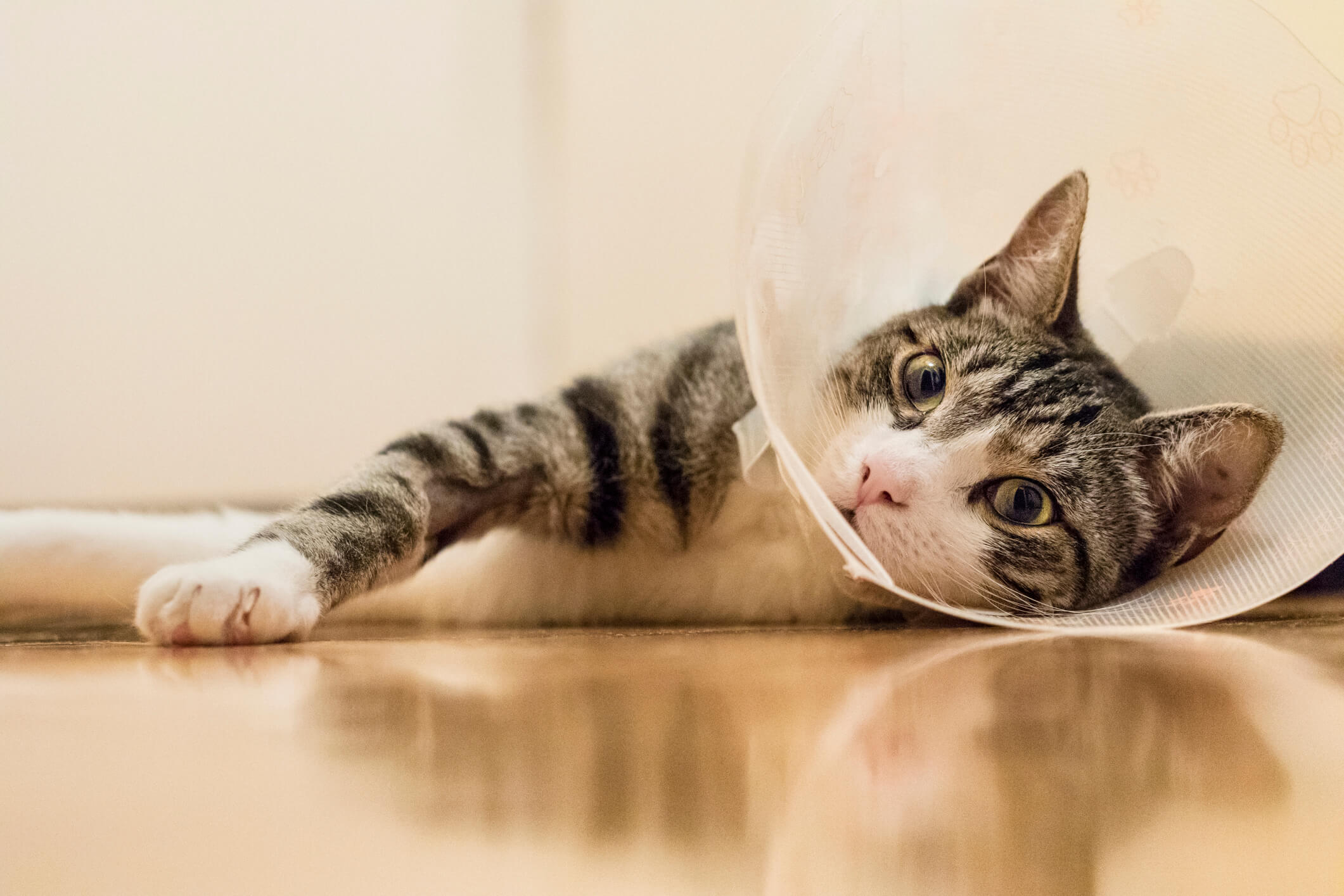
7 Tips for Caring for a Pet After Surgery
If your fur baby had a successful surgery, the scary part is over, and it’s time for them to come home. Now that surgery is out of the way, you and your pet can begin the road to recovery. However, you can’t go right back to normal. Post-surgical home care requires a lot of time and commitment for pet parents. Rest assured, your furry companion will return to their normal self soon!

In the meantime, follow these steps to protect your pet’s health during the recovery phase.
- Review care instructions with the vet: Every surgery is different, which means at-home care depends on the type of procedure. You’ll receive a discharge packet outlining steps for how to clean the surgical wound and administer prescribed medications. This packet will provide all the information you need, but if you have any questions, don’t hesitate to contact your veterinarian. It’s best to double-check with a professional than to experiment with cleaning techniques or medications that could complicate the recovery process.
- Give your pet some space: Every pet reacts differently to anesthesia—some growl or bite, while others have a hard time walking around. For the safety of your pet and family members, place your furry friend in a warm, secluded bathroom or bedroom. Provide the essentials like bedding, food, water and litter boxes, but refrain from offering toys that’ll get them riled up. The quarantine period usually lasts only a day or two until the pet has regained their mobility and starts acting normally.
- Closely monitor their symptoms: This step might seem counterintuitive, especially since your pet will need ample alone time for a proper recovery. Although post-op pets need their space, maintain a watchful eye to ensure their health gets back on track. Separate them from other pets and small children to avoid roughhousing that could end in damage to the surgical wound. Report to your veterinarian if any concerns arise, and bring the pet in for an impromptu appointment if necessary.
- Limit play time and movement: After the first couple of days, your furry friend will have a little more pep in their step. They’ll want to zoom around the yard and burn off the energy that got pent up while they were confined to a small room. However, your pet has quite a ways to go before they can resume their normal activities. All that running and jumping could tear stitches and force the healing process to start all over again. Make sure your pet takes it easy by keeping them indoors and off furniture, using a leash for potty breaks, limiting interactions with other pets and creating a calm environment.
- Create a special diet if necessary: Your pet’s feeding habits will likely change during the recovery process. Lethargy and loss of appetite are normal after surgery, so don’t force them to eat too much. Plus, keeping their food portions consistent with how much they normally eat could lead to excessive weight gain because they can’t exercise to counteract the caloric intake. If your pet won’t eat at all, offer bland foods like boiled chicken and rice. Pets need to take some amount of food with medication, and nutrients will keep their strength up.
- Clean and inspect the surgical wound: Caring for the surgical wound depends on your vet’s discharge instructions. The vet may require you to replace the bandages several times a day or ask that you leave wound cleaning to the professionals. If the vet wants you to clean the wound, follow their instructions about which topical treatments to use. Take this time to look for redness, swelling, tears, pus or a funky smell. These are signs of an infection and require another trip to the vet.
- Schedule a follow-up appointment: Your furry friend will likely need a follow-up appointment with the vet so they can make sure the pet’s recovery is progressing smoothly. They will assess the surgical wound’s condition to ensure it’s healing correctly and no infections are present. At this appointment, the vet will also discuss what the next steps will look like in terms of treatment and at-home care. Next steps may include removing stitches, prescribing antibiotics for secondary infections or physical therapy.

Surgery is no fun for pets or their owners. Some recovery periods take longer than others, and the amount of care required will depend on how intense the procedure was along with your pet’s current medical state. Following these tips and your vet’s post-surgery instructions will help pet parents minimize their fur baby’s pain and heal wounds as quickly as possible.


